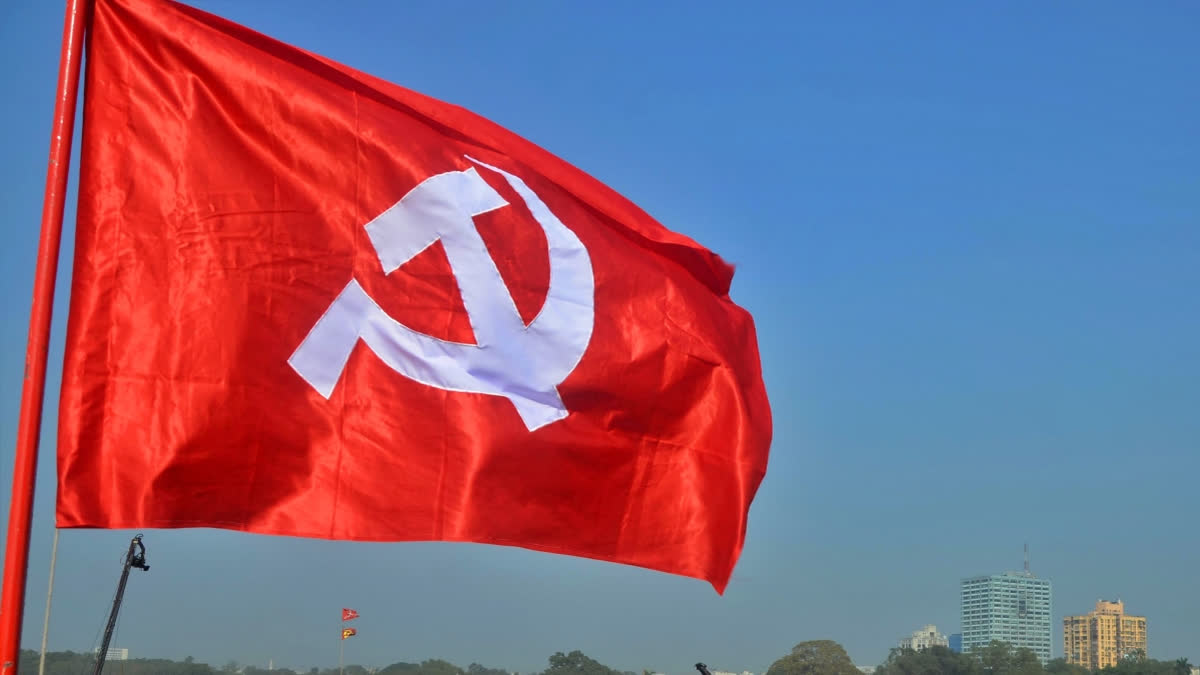Hyderabad: The Communist Party of India (CPI) stands as the oldest communist party in India, with its roots tracing back to the city of Kanpur where it was founded on December 26, 1925. The party's founding members included prominent figures like M.N. Roy, Evelyn Trent Roy, Abani Mukherji, Rosa Fitingof, Mohammad Ali, Mohammad Shafiq Siddiqui, Rafiq Ahmed, M.P.B.T. Aacharya, and Sultan Ahmed Khan Tarin.
Origin of CPI- The inception of the Communist Party of India can be linked to the global context of the time, particularly the aftermath of the Second World Congress of the Communist Third International in 1920. The formation process was initiated by the Comintern Executive Committee, which set up a sub-committee known as the 'Small Bureau.' This led to the First Congress of the Peoples of the East in Baku in September 1920, focusing on anti-imperialism in Asia. The Communist Party of India was officially formed on October 17, 1920, in Tashkent.
Early years of CPI- During its early years, the CPI faced challenges due to the British colonial administration's ban on communist activities. The party operated secretively until it was legalised in 1942. CPI's objectives combined militant anti-imperialist patriotism with internationalism, aligning with the nonviolent civil disobedience campaigns led by Mahatma Gandhi and the Indian National Congress. However, the party faced repression, including the imprisonment of its leaders in 1929.
Political Journey- CPI gained momentum post-independence by advocating for social equality, suffrage, nationalisation of enterprises, land reforms, and social justice. It emerged as the principal opposition party in national elections and even formed the first non-Congress government in Kerala in 1957.
CPI's decline- The CPI’s fortunes began to decline in the 1960s. It was defeated in the 1960 Kerala assembly elections by a Congress-led coalition. The 29 seats the party garnered in the 1962 Lok Sabha polls marked their electoral high point in that chamber. However, in 1964 ideological differences that had built up over a split between the Soviets and the Chinese communists in the 1950s and over the response to the 1962 border clashes between India and China prompted a large faction of party members (including Namboodiripad) to break with the CPI and form the Communist Party of India (Marxist), or CPI(M).
The split- The split weakened the CPI considerably at the national level. The CPI(M) surpassed the CPI’s seat total in the Lok Sabha in 1971 and consistently won two or more times as many seats as the CPI in subsequent elections. In Kerala, the CPI was forced to become part of a Congress-led coalition that governed the state between 1970 and 1977.
Liberation of Dadra-Nagar Haveli- The Communist Party of India, along with its units in Bombay, Maharashtra and Gujarat, decided to start armed operations in the area in July 1954. Both areas were liberated by the beginning of August. Communist leaders like Narayan Palekar, Parulekar, Vaz, Rodriguez, Cunha and others emerged as famous Communist leaders of this movement. Thereafter, the struggle to liberate Daman and Diu was begun by the Communist Party in Gujarat and other forces
Left Front coalition- In the late 1970s, the CPI aligned itself with the CPI(M) and other leftist parties, forming the Left Front coalition. This coalition gained political influence in states like West Bengal, Tripura, and Kerala. The CPI also played a role in the Democratic Progressive Alliance in Tamil Nadu in 2004. The CPI's political influence fluctuated in subsequent years. While it contributed to the Left Front's support for the United Progressive Alliance in 2004, the Left Front withdrew its backing in 2008 due to disagreements over the civil nuclear cooperation agreement with the United States. This decision led to a series of political setbacks for leftist parties.
Current status of CPI- As of December 2023, the CPI has a limited presence in the Indian Parliament and state governments. The party is a part of the state government in Kerala led by LDF. CPI has 4 Cabinet Ministers and a Deputy Speaker in Kerala. In Tamil Nadu, it is in power with the SPA coalition led by DMK. In Bihar, it is part of the Mahagathbandhan government and in Telangana, it is in alliance with the Congress government. The CPI, along with the Left Front, is part of the INDIA alliance formed to challenge the incumbent BJP-led right-wing NDA government in the 2024 General elections.


